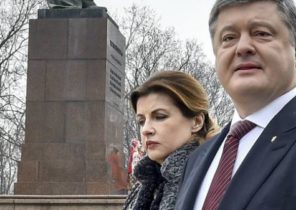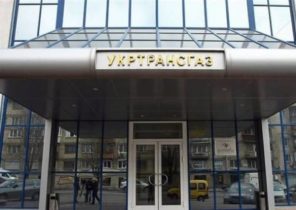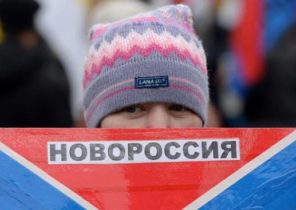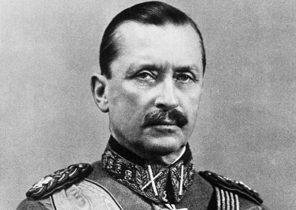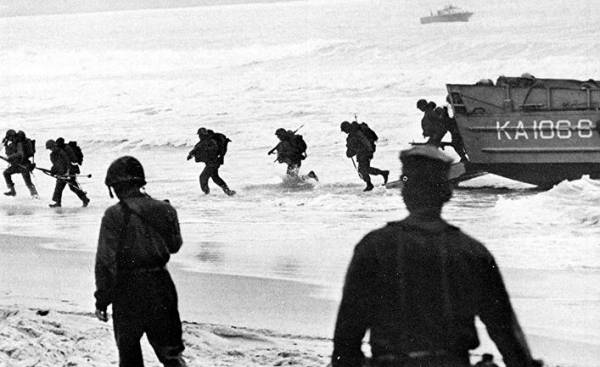
Once a marine, Theodore Wallace saw one of the officers casually aims a rifle at a Vietnamese boy in the distance.
— Sir, what are you doing? he asked.
— He must have supplies [Vietnamese people’s] army food, ‘ said the officer. Otherwise what would he even do here?
It’s his country! replied Wallace.
(From the book by Mark Bowden “hue 1968: the Turning point of the American war in Vietnam”.)
In 1968, shortly before the main state holiday of Vietnam’s Tet (New year according to the lunar-solar calendar — approx. TRANS.), the commander of us forces in the country, General William Westmoreland sent a telegram to the joint chiefs of staff in Washington with the announcement that he had a plan. The General offered to play the same music record in order to provoke the collapse of the Communist forces, which, in his opinion, could focus on the attack on U.S. forces stationed in Cheseni near the demilitarized zone:
“Vietnamese young people are quite sentimental applies to the family, a Tet —traditionally a family holiday. Experts in the field of conducting psychological operations recently came up with and recorded in honor of the event, very touching song. She is so tearful that out of fear a sharp rise in the level of desertion of Vietnamese forbade his soldiers to listen to her during the celebration of Theta. When the holiday starts, we lose one of these records to the soldiers of the Vietnam people’s army in the area Chachani and Kunthiana”.
This surreal passage is taken from a magnificent, petty and meticulous work, pen Mark Bowden, the pages of which he in detail told and inspiring at the same time, infuriating story. Its subtitle is a major understatement of fact. After 1968, namely the so-called Tet offensive of North Vietnamese forces in the South, the rapid takeover by Communist forces in hue, the third largest city in the country, and 24 days of fierce fighting that preceded their expulsion, became a significant milestone in American history. A month later, President Lyndon Johnson made a statement that he would not seek re-election in a country where disagreeing with the war and trust in government develop in inverse proportion.
After the first day of the battle, January 31, Westmoreland reported to Washington that the enemy was about 500 people in the citadel of hue. “He was, writes Bowden, 20 times less.” Intelligence services of the USA fared no better. A few months before that Advisor to President Johnson for national security, Walt Rostow gave EN route to hue, the reporter the information “not for publication” that the war is essentially already won, because the agricultural culture called “rice IR8” will negate the revolution of the Communists and will produce “green revolution”. Theory Rostow collapsed due to the fact that Vietnamese rice IR8 was not to taste.
Arriving in hue, the Communists immediately began to “promote” a revolution through scrubbing the “enemies of the people”, which quickly turned into an Orgy of violence and settling scores. While Westmoreland was engaged Cheenu (“Before writes Bowden, — with such success facts not rejected no General”), the day after the offensive began in Okinawa held a meeting of the members of a secret American planning group, the purpose of which was to discuss the plan, code-named “broken jaw” with the use of tactical nuclear weapons. Westmoreland said that “in the current situation,” the need was not in it.
Thanks to almost half a century later interviews with those who fought on both sides of the people Bowden had a unique description of the fighting small units. Lasted several months of Communist infiltration of their agents into enemy territory and large-scale preparations were matched for their military skills. “Every one writes Bowden, American veterans with whom I spoke, told us that faced with well-trained, motivated, skilled and determined enemy. Any other feature can discredit the achievements of those who drove them out of hue”. In June 1968 Westmoreland of his command was suspended.
The image of an American tank with its dead and wounded Marines in hue Bowden calls “one of the greatest shots in the annals of combat photography.” Everything imprinted on it, the soldiers remained unidentified until after more than four decades, Bowden has not found that 18-year-old boy with a chest wound, which looked “dead or dying”, was the name of Alvin Burt Grantham, and he was born in the city mobile in Alabama. It was his story the author tells.
During street fighting marine Eden Jimenez cleaned the room, throwing grenades inside and shooting inhabitants — and found one of them high riddled with his bullets the wardrobe. In it, he found the mortally wounded woman, who carried a rifle and prisimasy a child. Bowden writes: “even in old age, living in Odessa, Texas, he couldn’t stop thinking about the woman and the child… Who was she? What if he killed a child?”
Hue as that which led to it war, continues to haunt the minds of some of us living among the elderly. And the legacy of war continues to exist in distancepreps trust of Americans to their government. The high level prior to the Vietnam war, it did not reach even once since 1968.
